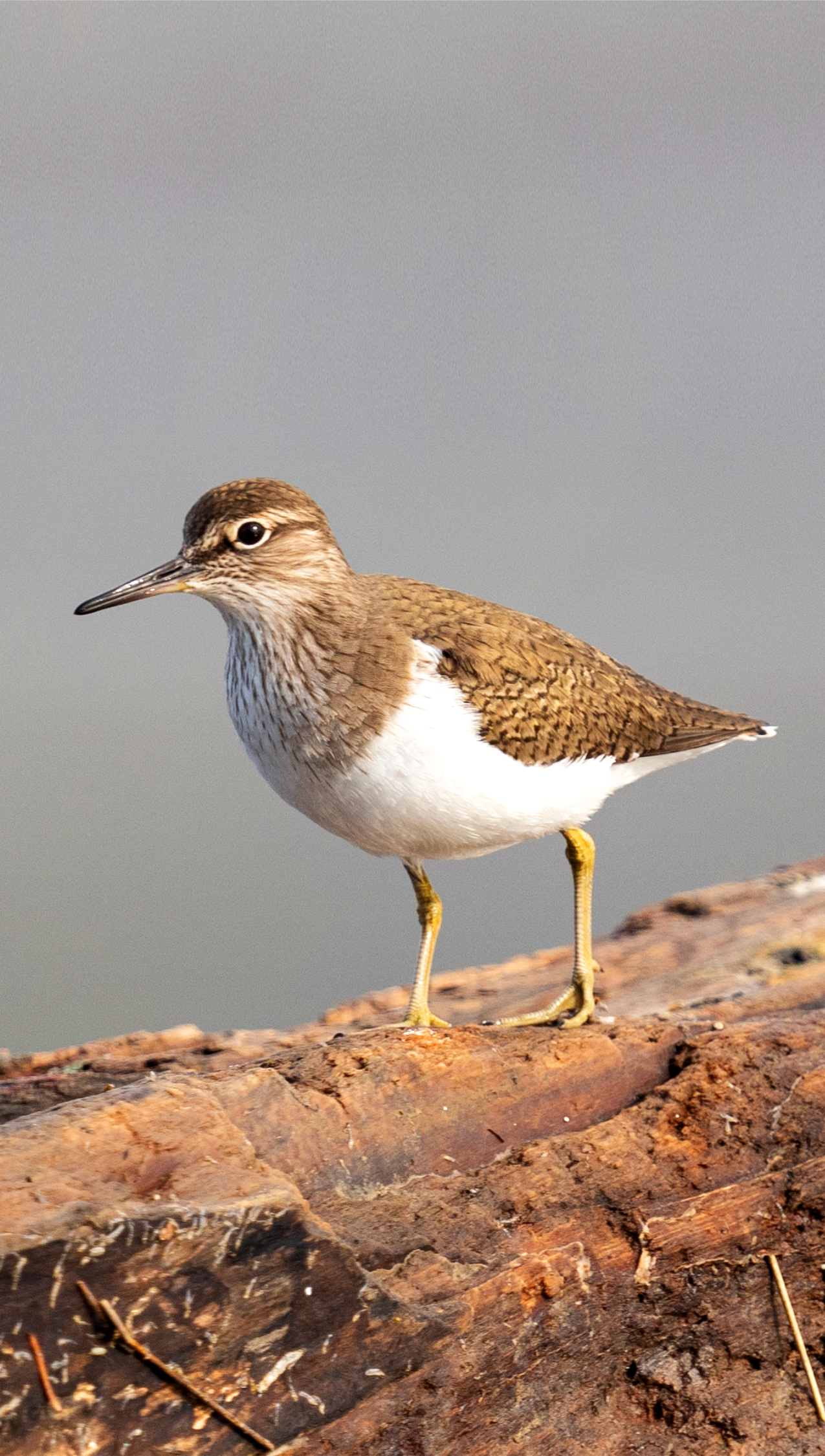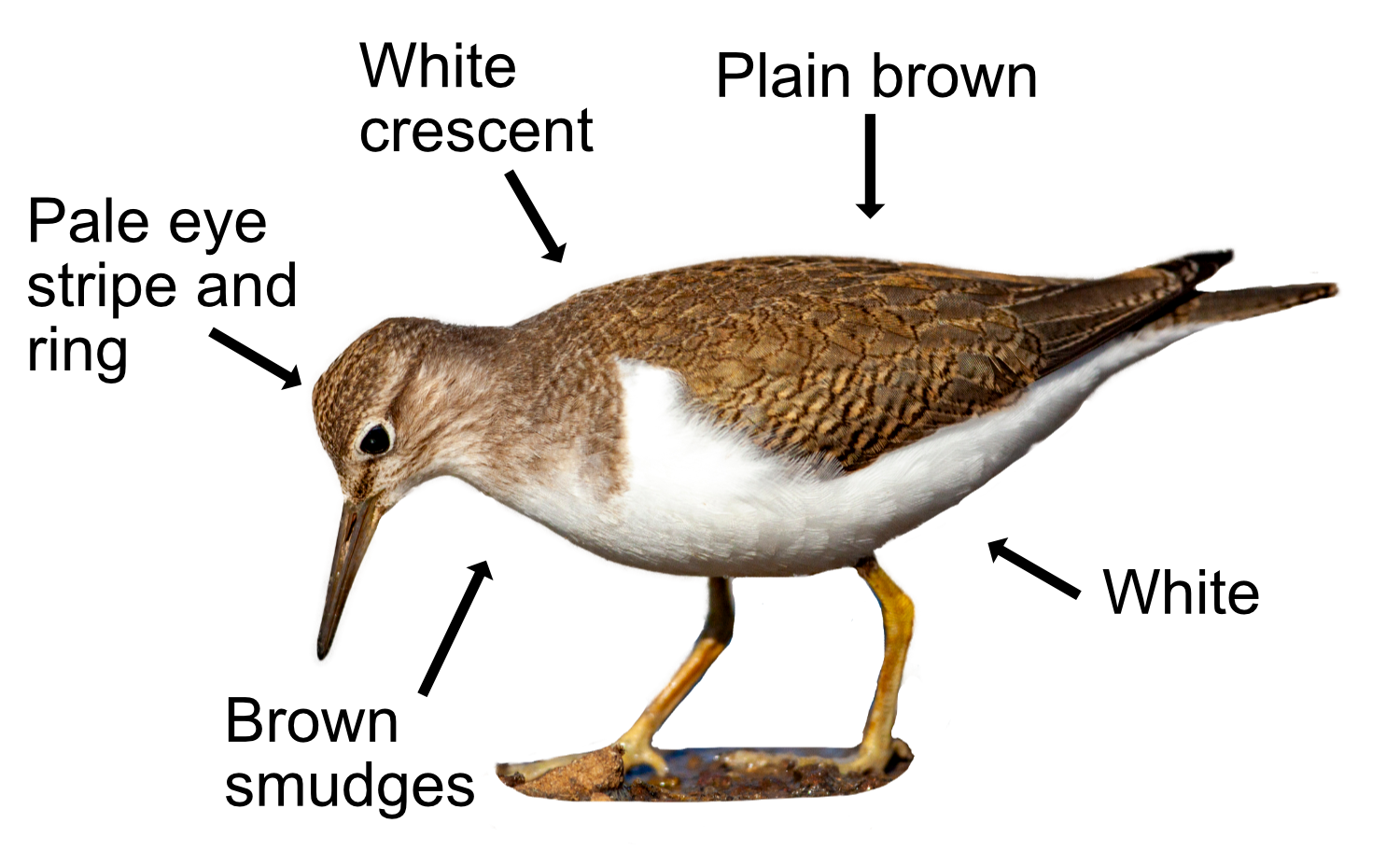
The Common Sandpiper, sadly, is not that common. You are more likely to see a Green Sandpiper than a Common Sandpiper. They are summer visitors and like fast-flowing rivers and upland streams with stony edges, though they can also be seen at marshes and lakes during their migration in July and August. You usually see them in ones or twos as they don't like crowds.

The Common Sandpiper is similar in size to a Green Sandpiper, but is smaller and shorter-legged with contrasting plain brown upperparts, white underparts, and a distinctive white crescent shoulder patch. It has a medium length brown bill, brown smudges on the side of its breast with a neat division between the breast and pure white underparts, and a pale eye stripe and eye ring. It does a funny, bobbing walk, known as 'teetering', on its short yellow-grey legs. When flying, the wings look 'stiff' and flicker below the level of the body, looking bowed, and you can see a white wing bar and white sides to the tail. Their call is a sharp, three-note, "willy-wicket".
Common Sandpipers feed by eyesight on insects which they pick from the surface rather than probing into the sand or mud. Their food includes flies, beetles, earwigs and grasshoppers.
The males arrive first in March, and they begin breeding in April once the females show up. If she comes back to the same site as the male from the previous year, they will usually pair up again. If they don’t, it is because she was ridiculously late or because she spotted a better territory, having found last year's site a bit rubbish. Between them, they make several scrapes, then the female selects one and lines it before laying her 4 eggs. Both parents incubate the eggs, with dad doing the night-shift, until the eggs hatch 21 days later. Both mum and dad look after the young. When threatened, the young may cling to their parent's body to be lifted away to safety (a bit like being rescued by a helicopter)! The youngsters can manage weak flight themselves after 15 days and full flight after 25 days.
There are 15,000 breeding pairs in Britain with most being in Scotland as pollution of English rivers has reduced the food they need. Their low numbers make them Amber listed. Most Common Sandpipers migrate to Africa for the winter, though about 100 stay here. The oldest ringed Common Sandpiper lived to be 12 years old.
Their Latin name is 'actitis hypoleucos' where 'actitis' is from Ancient Greek 'aktites' meaning 'coast-dweller' and 'hypoleucos' is a combination of the Ancient Greek 'hupo' meaning 'beneath' and 'leukos' meaning 'white'. A coast-dweller with white underneath. Close enough.